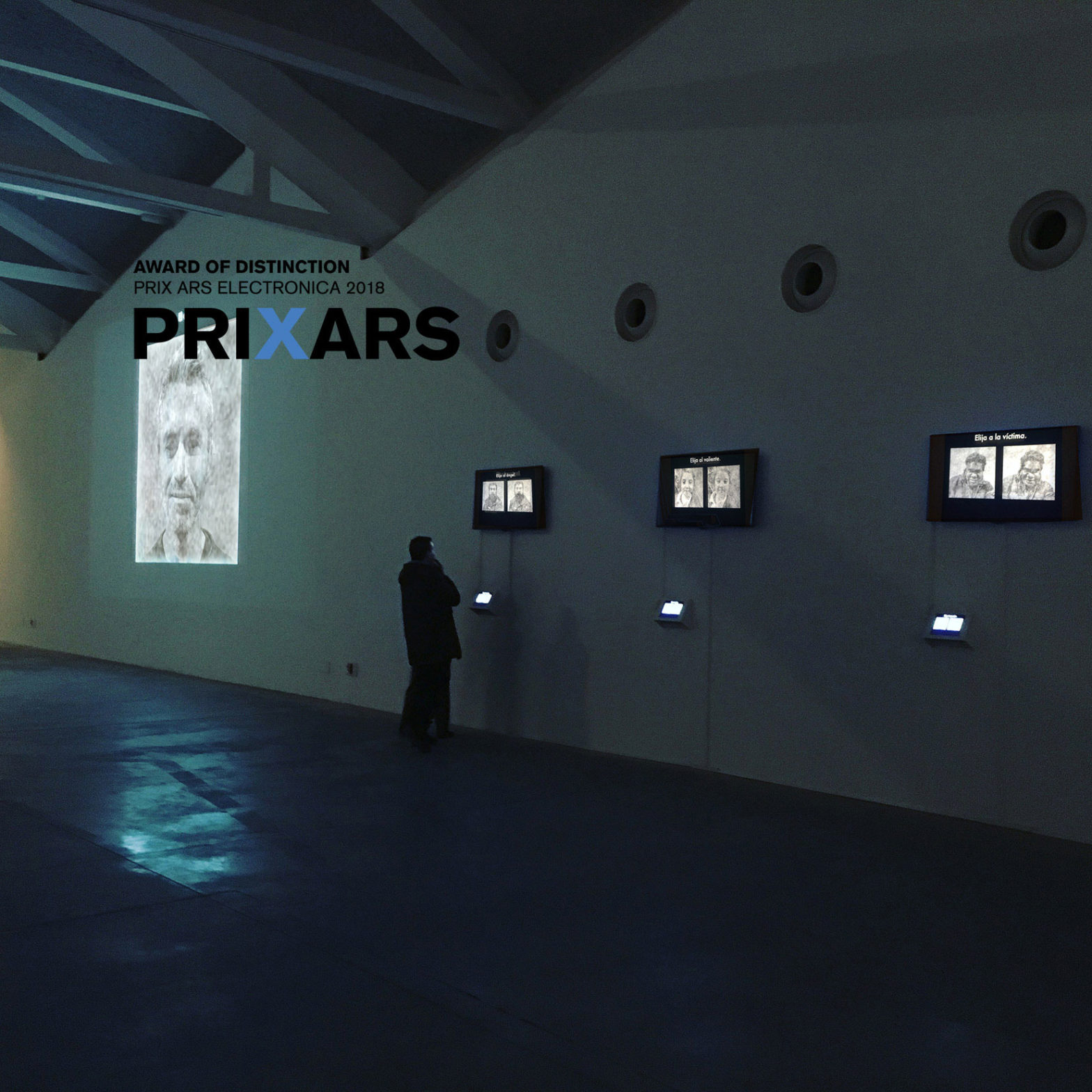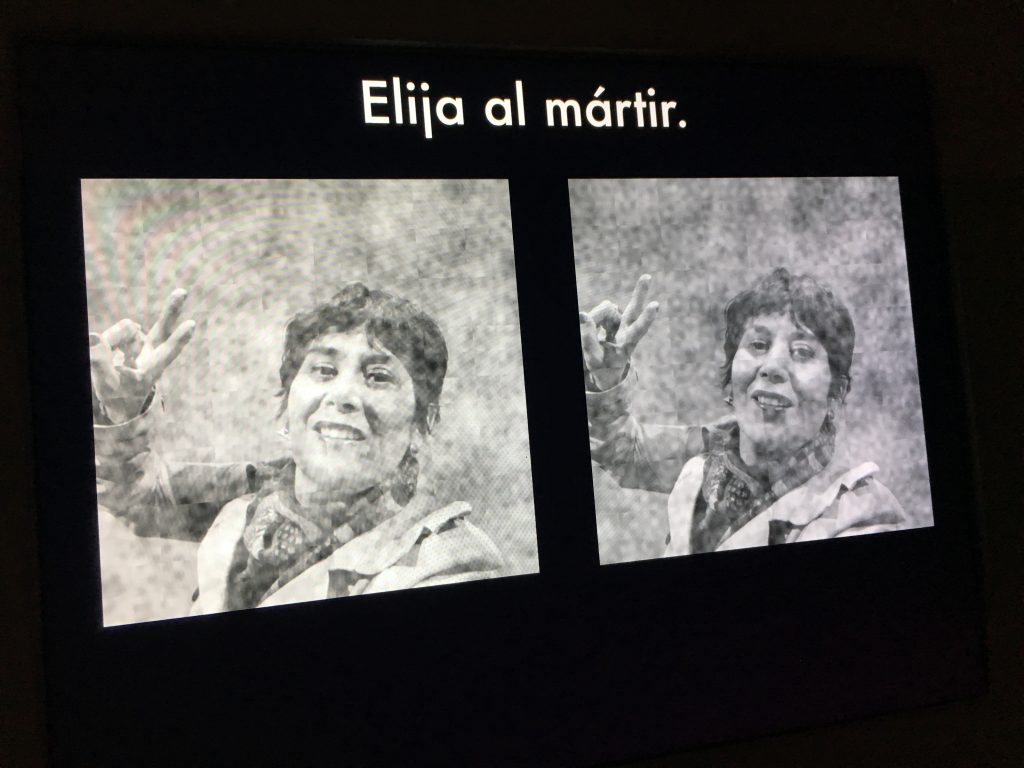

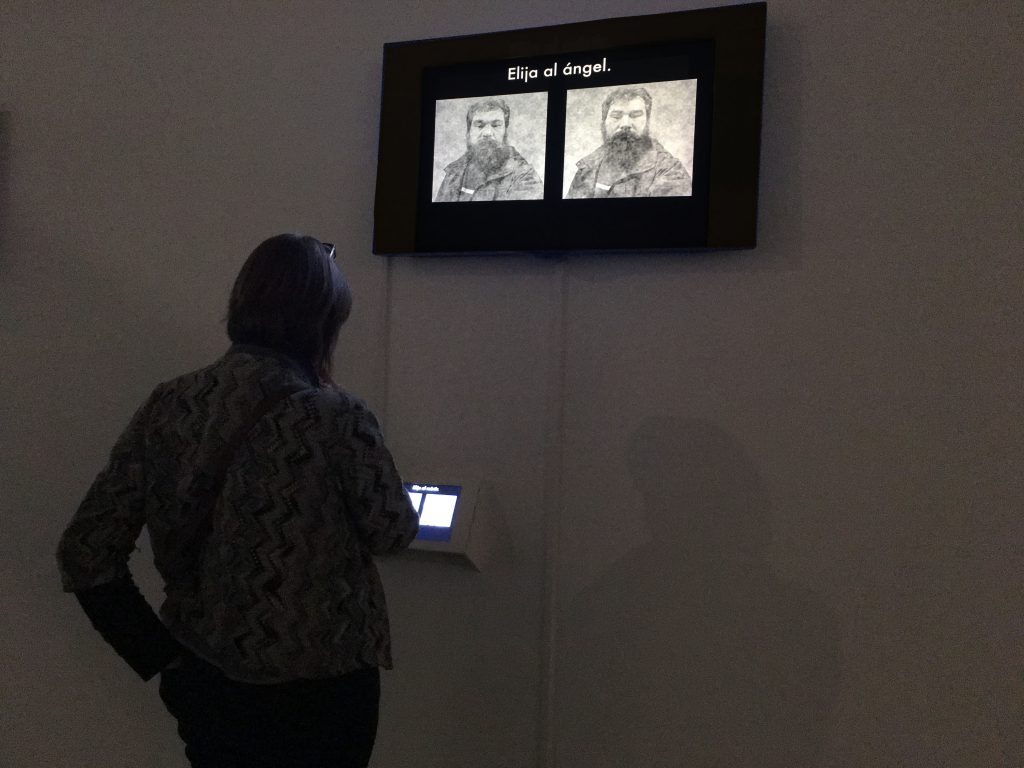
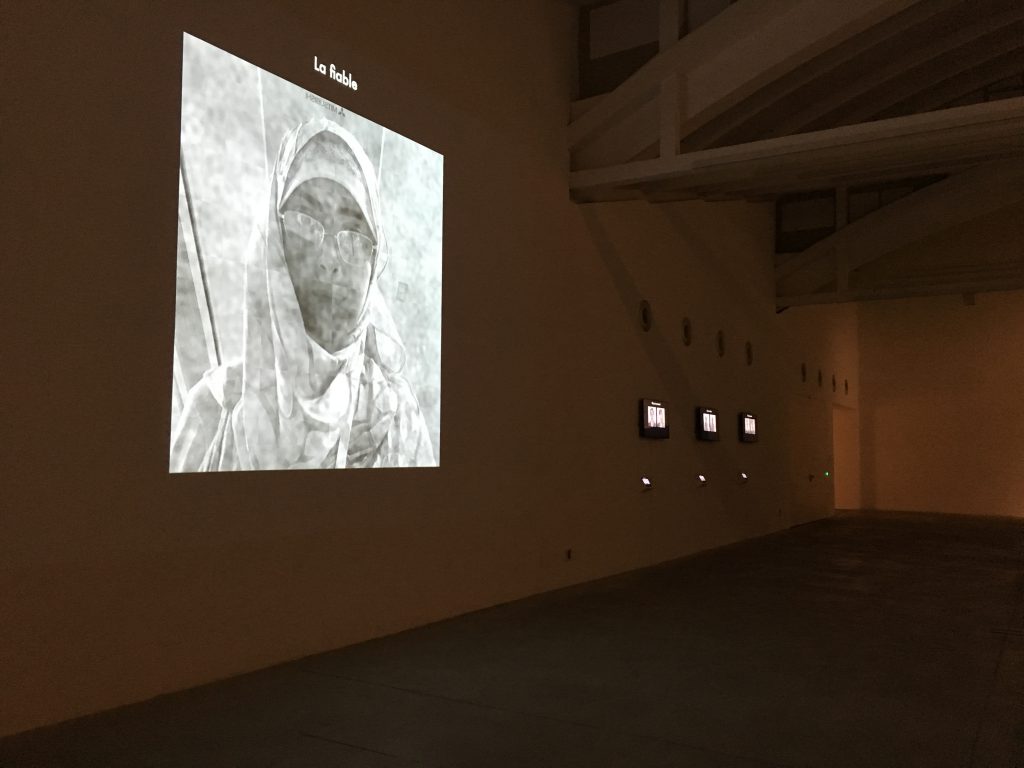

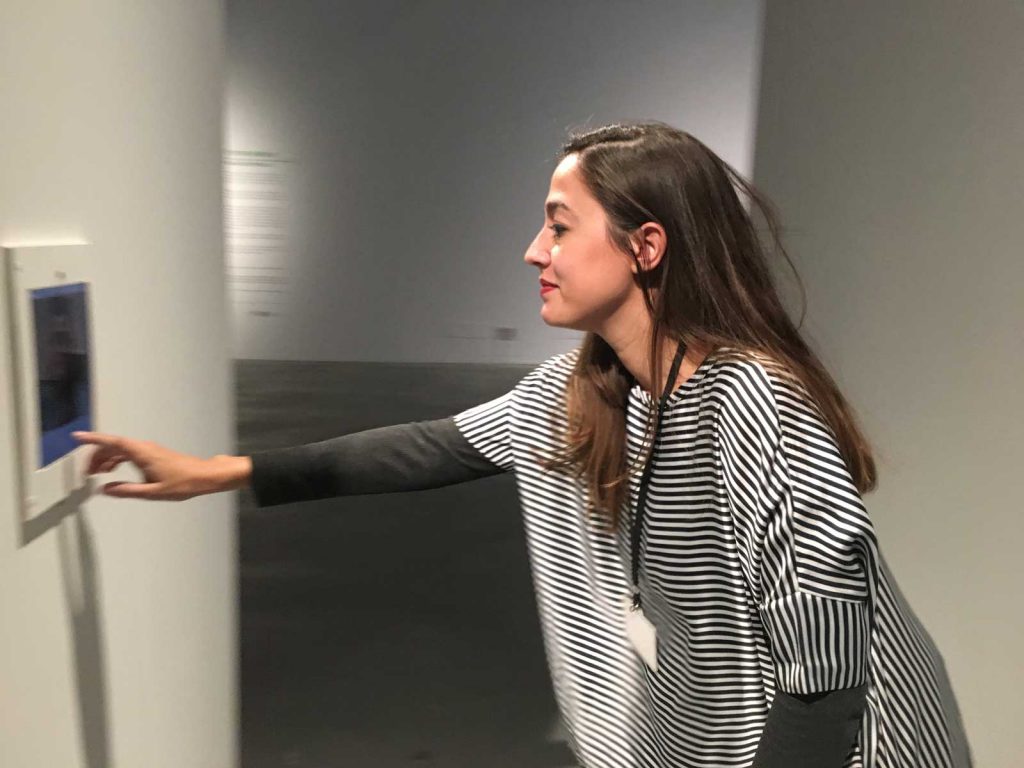

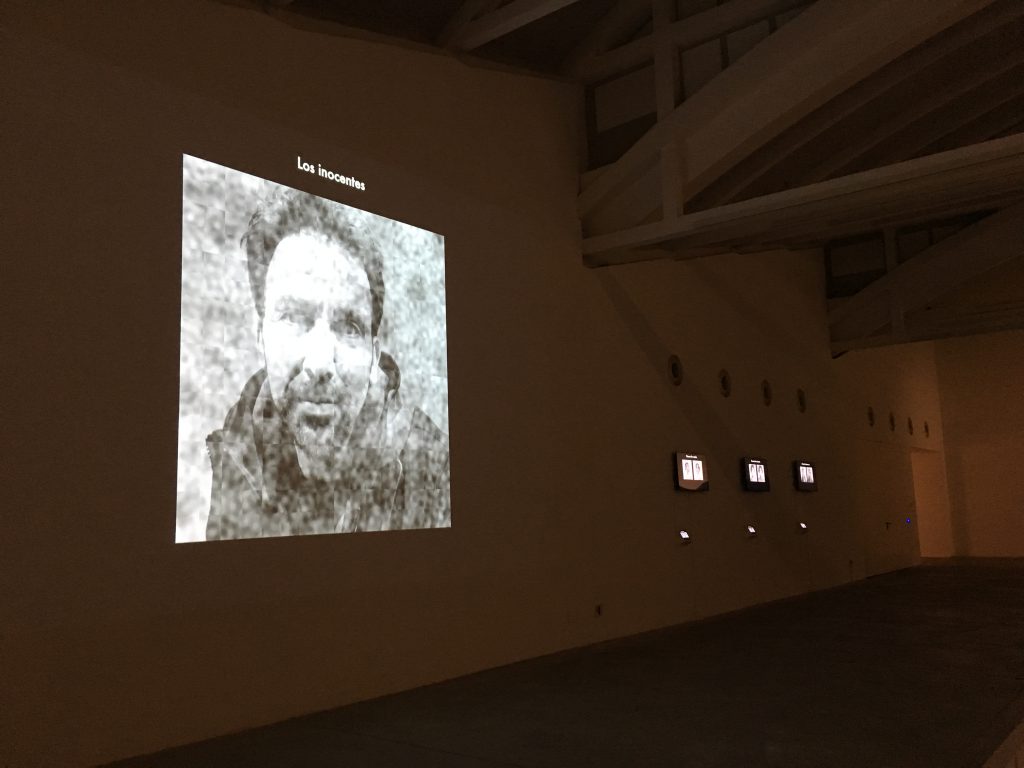
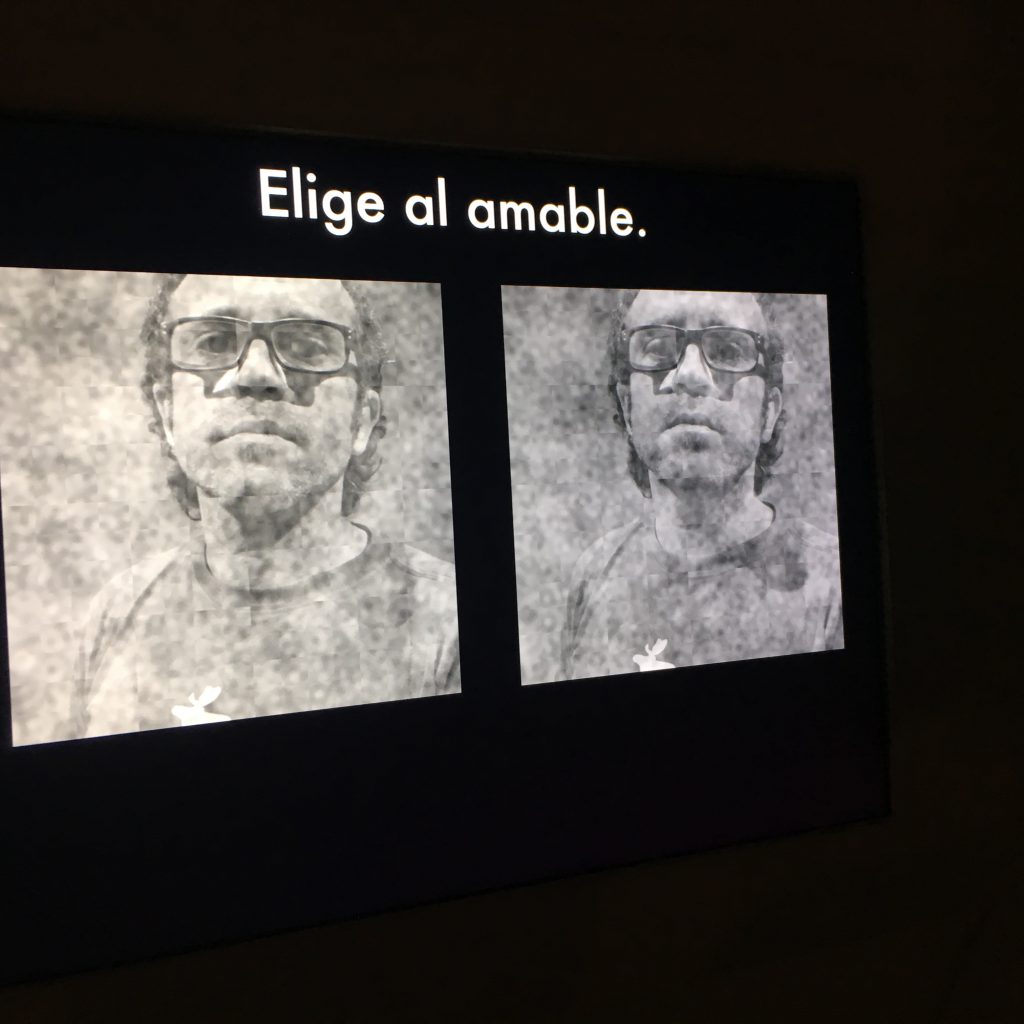
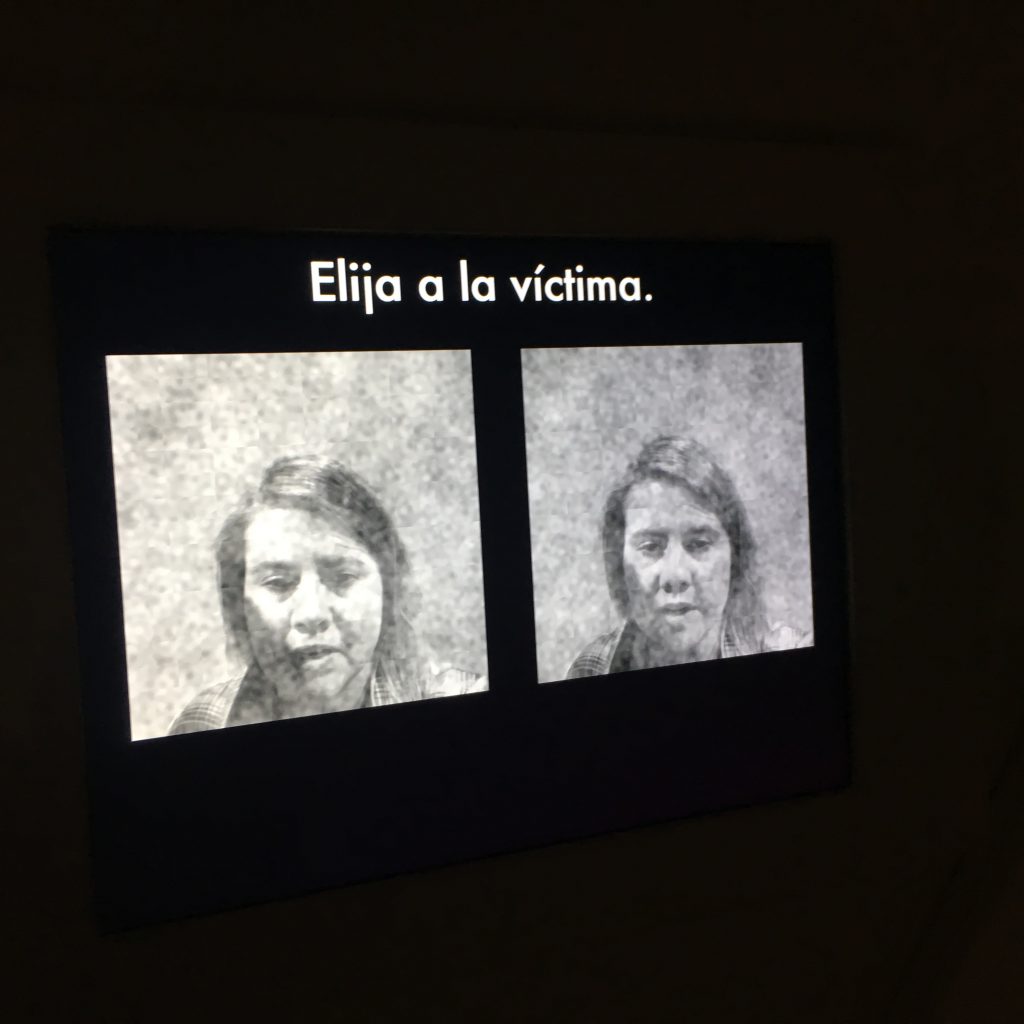
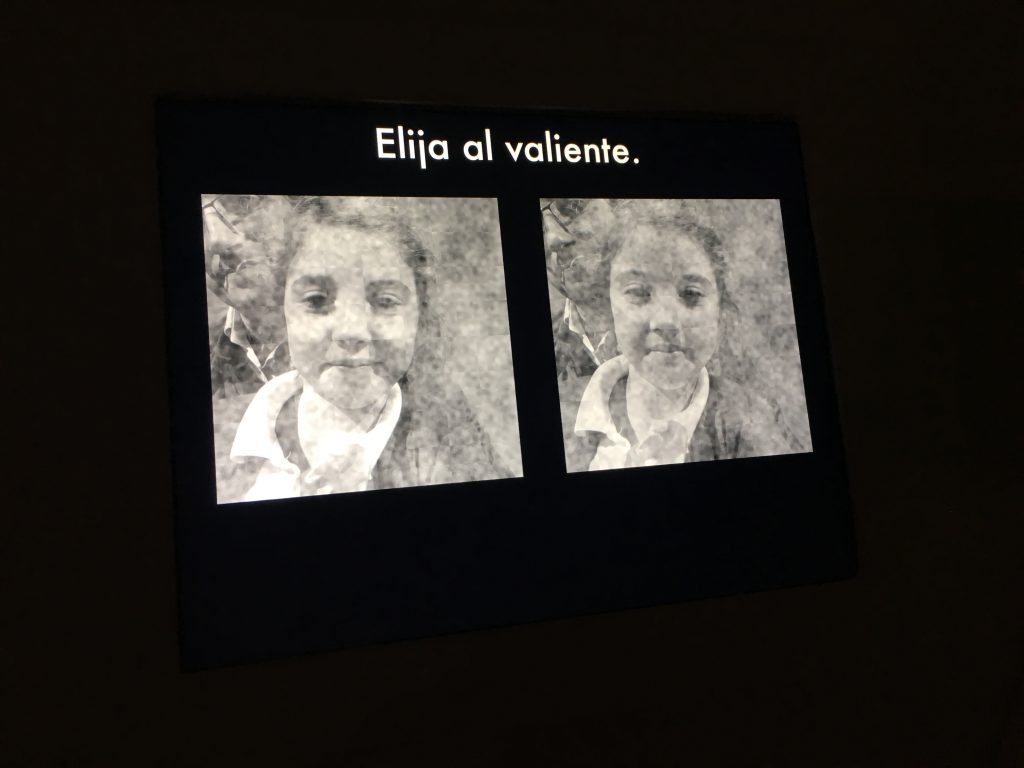
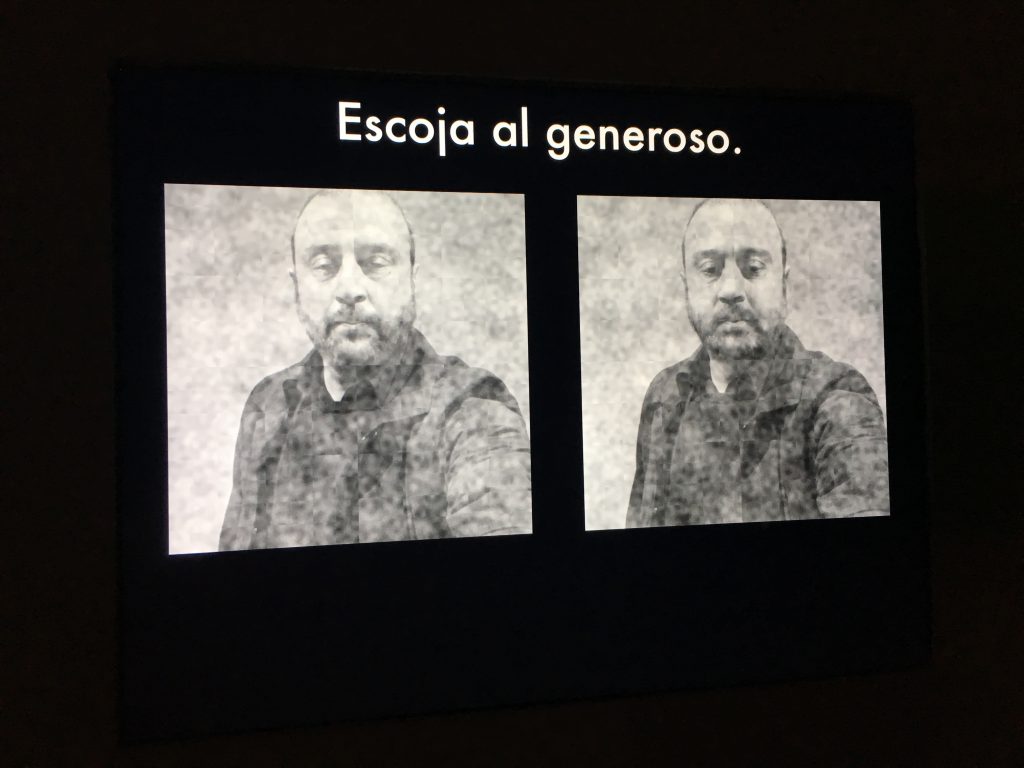



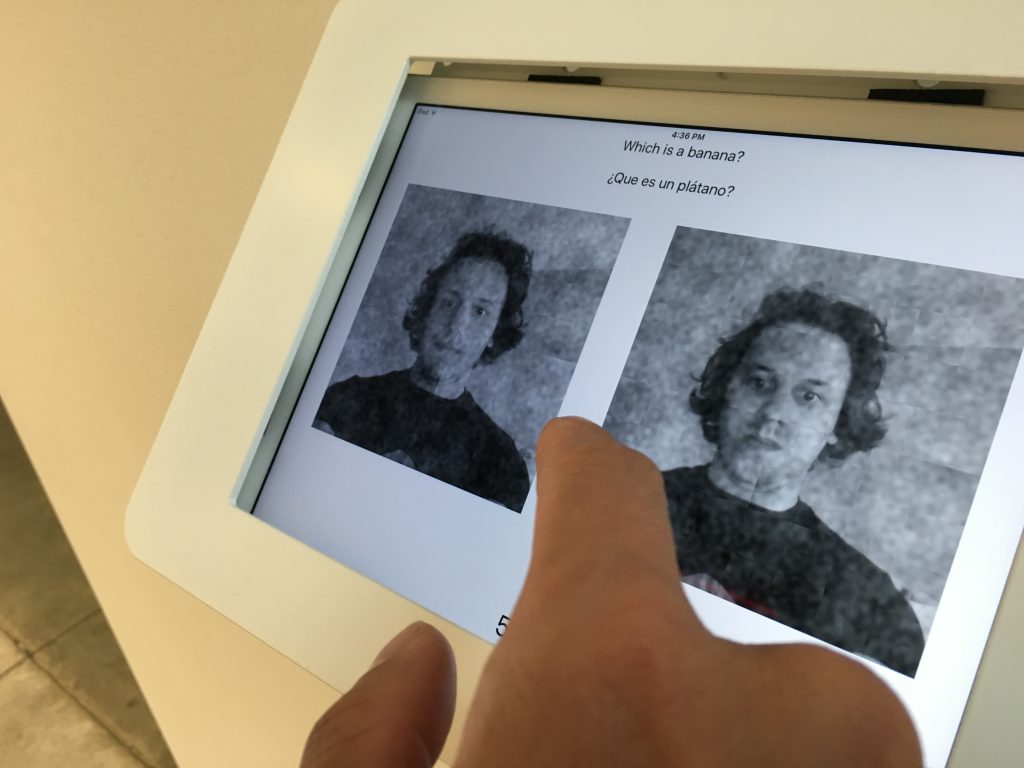
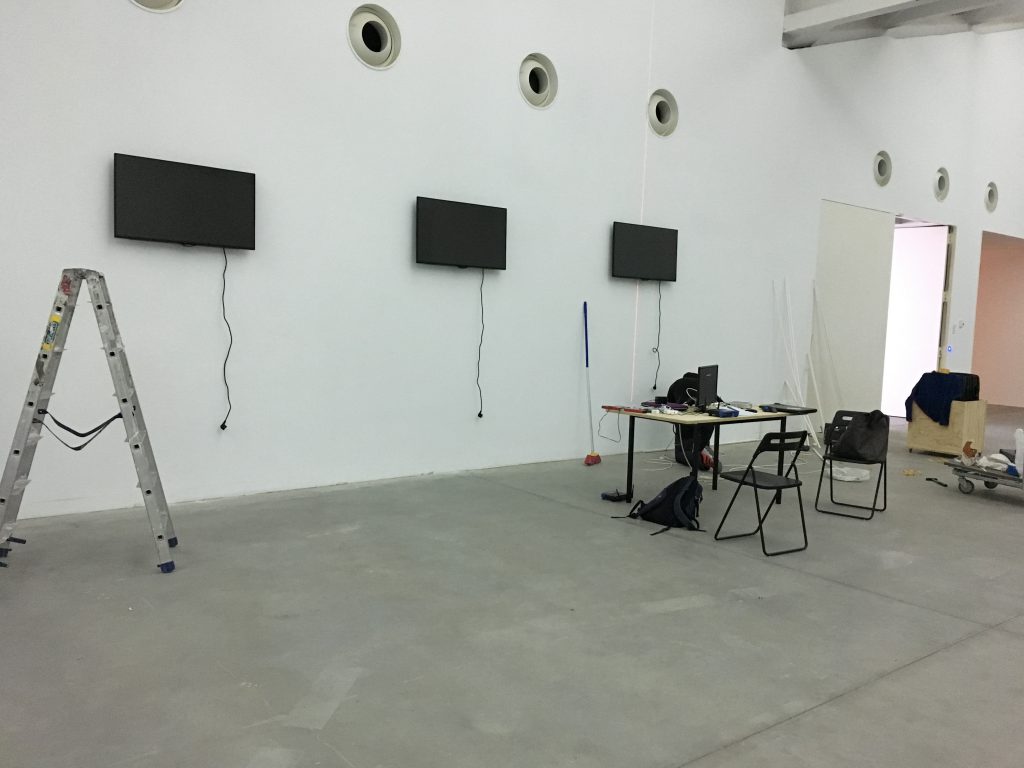
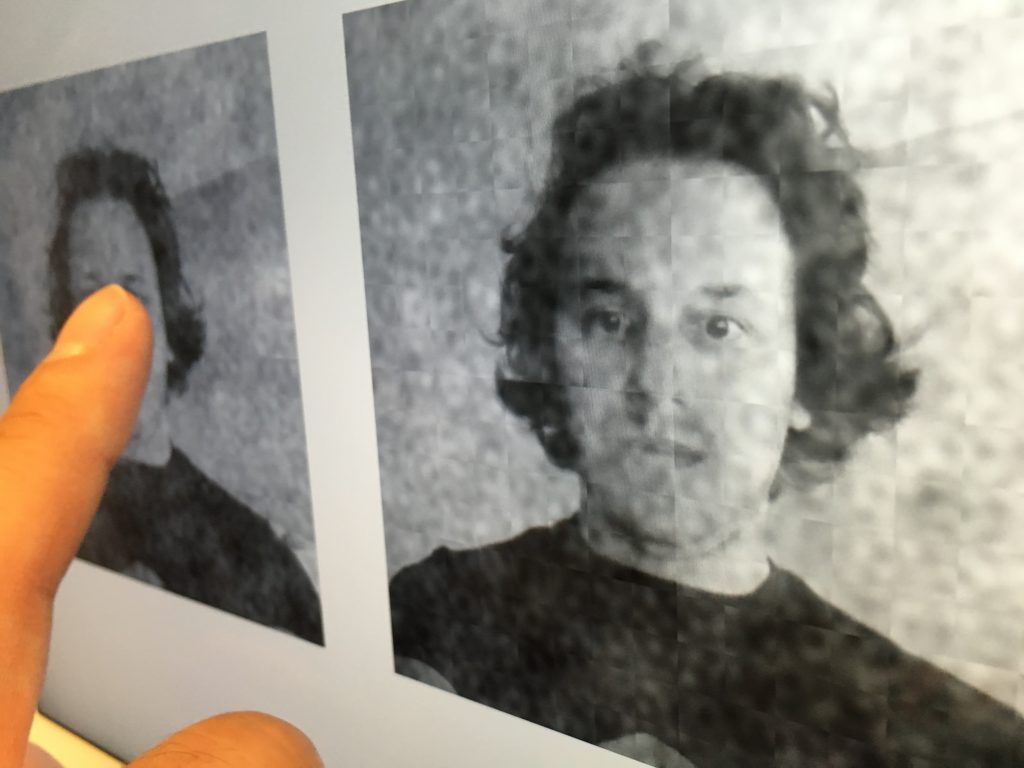
Videos
[help me know the truth]
Custom software, 4 tablets, network, projector, dimensions variable
2017
[help me know the truth] is a complex installation that uses computational neuroscience algorithms to reveal people’s collective unconscious biases. I use the “reverse correlation” method in computational neuroscience to change images and ask visitors to choose one of the altered images based on a prompt.
How it works: Visitors at the gallery first take a selfie. The software adds noise algorithms to this image, producing two versions of the selfie that are slightly different. Then visitors are asked to ‘judge’ the altered face alongside a randomly assigned prompt: to choose which face is more trustworthy, for example, or less friendly; which is nicer, or likely a terrorist, etc.
The noise pattern is saved with the selected face and the process progresses, moving from iPad to iPad around the space. The resulting image after being altered and judged multiple times finally appears on a large projection, the face being ‘sculpted’ by our invisible collective biases.
That gallery visitors are constantly judging the people around them (the selfies are distributed immediately around the gallery) and that other people in the gallery are judging them is a key part of the enjoyable, yet also uncomfortable, experience of the work.
The intent behind [help me know the truth] is to question the accuracy of computational identification and facial recognition in the face of bias. It also exposes the categorizing systems of the mind, and how they are therefore subject to socially constructed fears and values. The work further calls into question notions of truth. Do we trust computers to categorize our physical appearances? Do we trust ourselves?
Exhibitions
- Hyundai Motorstudio Beijing. “Future Humanity – Our Shared Planet“, Beijing, China, October 2018 – February 2019
- Error: The Art of Imperfection, Ars Electronica Cyberarts Prix Exhibition, OK Center for Contemporary Art (OK im OÖ Kulturquartier), Linz, Austria, September 2018
- Art|Sci Gallery, UCLA, Los Angeles, California, March 2018
- Monsters of the Machine exhibition, Laboral Art Center, Asturias, Spain, November 2016 – August 2017
Press
Ars Electronica Press Release. “Future Humanity – Our Shared Planet” September 2018.
Ars Electronica Catalog “CyberArts 2018“
D’Auria, Veronica. “[help me know the truth] Mary Flanagan (US)-a software-driven participatory artwork for Ars electronica.” 7 October 2018.
Additional Credits
Jared Segal, Ron Dotsch whose reverse correlation software was adapted for this project, Danielle Taylor, and Sukie Punjasthitkul
